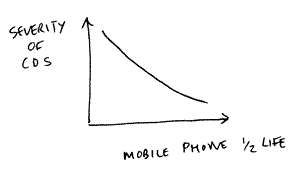Monitoring
While the diagnosis of CDS is based on features of carbon dependence, measures of carbon consumption can provide a useful guide to disease progression and/or success of treatment.
The Carbon Footprint
The Carbon Footprint gives a simple measure of an individual’s consumption of carbon-based fuels and is usually expressed as kg CO2 emitted per unit time (to convert to kg carbon, divide by 3.7 - which adjusts for the difference in molecular weight).
The average Carbon Footprint for UK citizens is 11 tonnes CO2e / year [1]. Although not known for sure, the healthy range is believed to be below 2, possibly as low as 1 tonne / year.
To date, no single carbon footprinting method has been endorsed by experts in the field. All the methods currently available provide an incomplete picture, as they tend to include travel and energy use but often do not take into account the carbon impacts of diet or nvConsumption. For this reason, it is best to look at the overall trend in footprint size, rather than at individual values. In addition, since each method tends to produce a different numerical result, it is important to keep to the same one over time.
A commonly used footprinting tool is the ActOnCO2. This is available as a home-testing kit, allowing a patient-centred approach to management. Ask your patients to fill in a footprint chart and bring it with them to appointments.
Mobile Phone Half-life
This has been proposed as a marker for nvConsumption, which could be usefully combined with Carbon Footprinting for a more complete picture. Note that it is most sensitive in severe cases, and usefulness is limited in more indolent forms of the disease.


